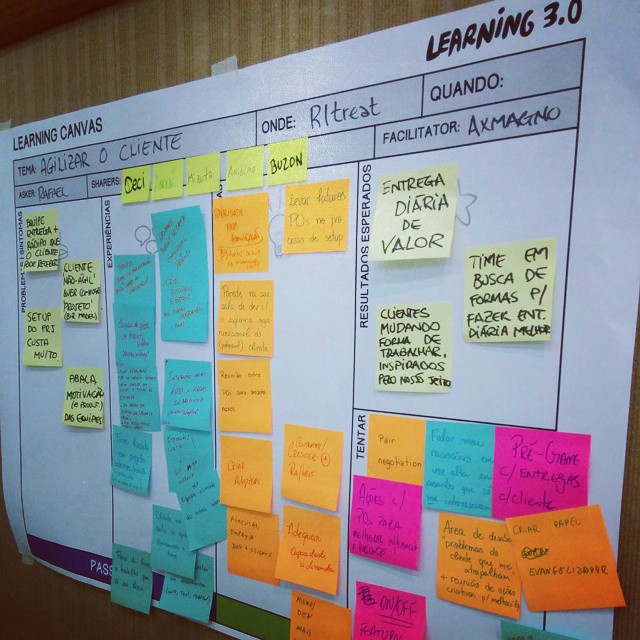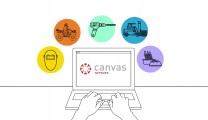The origins of the Canvas
The very first subject I experimented with was on the subject of Customer Service and to be honest, the first meeting was not so good. I mainly put this down to the following reasons:
It was hard to instill discipline and control within the time-box. You know: everybody has tons of stories that they want to share…in minute detail.
Participants with better presentation skills, or those with more experience on the subject, subtly assumed control of the session, And the other, less bold participants fell pretty silent throughout the main discussions. Previous experiences were considered more important than non-tested ideas and stories from people with less experience were simply ignored.
Hence, the Learning Canvas was born out of emergent contributions and these derived from participants who were trying to fix real world problems while trying to learn in the group.
Don’t ignore ideas
People are used to paying more attention to previous experiences than to brand new ideas. This happens because people believe that since it worked (or didn’t work) the first time, if will of course work when applied again. It’s safe and predictable, right? And there’s our problem; because in a complex business world, there is no guarantee that an experience will repeat the result when applied in a new context of space and time.

Why should we pay attention to older ideas rather than to new ones?
I also found the solution to that conundrum in the first session. From there I used a whiteboard with two separate areas to manage the subsequent session:
- Past (for stories)
- Future (for ideas)
It served as the basis for our meeting. I then used the same timebox for discussions which fell into both areas.
With that constraint, I collected stories from the past and ideas for the future and then people started to give the same credence to both areas. This organisation was undoubtedly the first step in creating the learning canvas.
As I hope I’ve made clear, this simple drawing on the whiteboard was the starting point of the Learning Canvas.
Breaking knowledge hierarchy
Having well defined areas for stories and ideas helped me to put both on the same level. However, another problem still remained: experienced people (or self-proclaimed experts) were dominating those conversations, and with that, a hierarchy of knowledge took place.
As I wrote before, “hierarchy can be a great inhibitor of emergent learning”. I needed to find a way of elevating all attendees to the same level. That was the case for creating defined roles for the canvas.
The ‘Asker‘ is the person who will share their problems on a specific subject. He or she is asking for help. The ‘Sharers‘ are the other participants, those who have related stories or ideas to share. All sharers are on the same level, regardless of the level of expertise they may bring to the group.
One of our Learning Canvas’ earliest-adopters was the CEO of a leading a digital business in Brazil. In one of our conversations he said to me, “Usually I face a lot of challenges that I’ve no idea how to deal with. I want to listen to my people, to all of them, but it’s so expensive, boring, and sometimes unfair, since only the people working in important roles are invited to contribute”.
We decided to run an experiment: a weekly learning canvas in the main room of the company where the CEO (identified as The Asker) placed his most recent problems and asked for stories and ideas for the canvas, and for every employee to share their advice. It was a huge success!












Replies to This Discussion